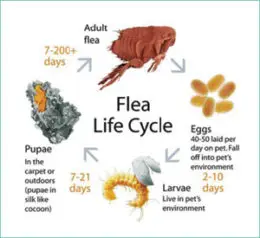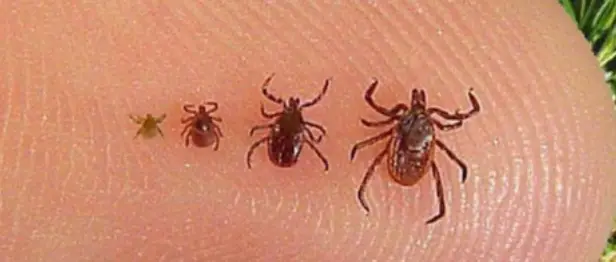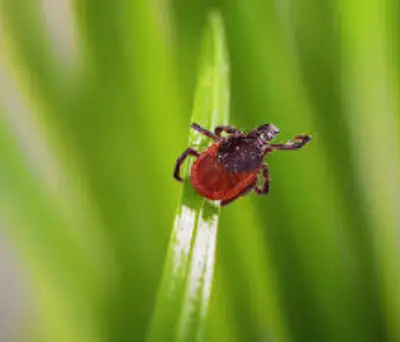Fleas are more than just an annoyance for puppies, they’re tiny parasites that can cause significant problems for our furry friends. These little insects survive by feeding on the blood of dogs, and puppies are especially at risk because of their vulnerable immune systems.
Flea infestations can quickly get out of hand. A single adult flea can lay up to 50 eggs a day, which soon hatch into larvae, pupate, and become adults. This fast life cycle makes it easy for flea populations to explode, making it crucial to act quickly when you first notice fleas on your puppy.
Recognizing when your puppy has fleas is vital. Look out for excessive scratching, biting, or licking, especially around the tail, neck, and belly. You might also notice small black specks, often referred to as “flea dirt,” on your puppy’s skin or bedding. These are actually flea feces, a sure sign of infestation.
The dangers of fleas go beyond just discomfort for your pup. They can lead to severe issues like skin infections, allergic reactions, anemia, and spread tapeworms. Puppies can struggle more than adult dogs with these problems since their immune systems aren’t fully developed yet.
Moreover, some puppies develop flea allergy dermatitis, an overly sensitive reaction to flea bites, causing intense itching and irritated skin. This condition can lead to significant discomfort and persistent skin issues if not addressed.
If you suspect or confirm fleas on your puppy, acting promptly is crucial. Consult your vet for appropriate treatment options, as they’ll guide you on the best course of action considering your puppy’s age and medical history.
Effective Strategies to Prevent Fleas on Your Puppy
Keeping fleas at bay is all about consistent care and a few smart strategies. Start with regular grooming. Brushing your puppy frequently can help spot fleas early and keep their coat clear of debris and eggs. A flea comb is an excellent tool to catch these pests and prevent them from multiplying.
Invest in flea prevention products that are safe for puppies. There are numerous options out there – topical treatments, flea collars, and oral medications. It’s best to have a conversation with your vet to find what will work best for your furry companion, especially since puppies have different sensitivities compared to older dogs. Remember that chemical based flea products are typically not safe for puppies under 7 weeks of age.
There are also natural methods for flea prevention that some pet owners prefer. These can include regular baths with gentle, puppy-safe shampoos, and using natural repellants like lemon water sprays. While these may not be foolproof, they can help minimize the risk of an infestation.
Your puppy’s environment plays a big role in flea control too. Washing your puppy’s bedding often, vacuuming carpets regularly, and keeping the living area clean can make a big difference. By reducing their presence in the home, you’ll lower the chances of fleas finding their way onto your puppy.
A solid relationship with your vet is invaluable.
Regular check-ups not only catch issues like flea infestations early but also help in developing a tailored prevention plan. They can recommend specific products and strategies tailored to your puppy’s size, breed, and health needs.
Monitoring your puppy for signs of fleas should be a regular habit. Any signs of unusual scratching or biting should prompt a closer look. Early detection is key to preventing a full-blown infestation.
Identifying Dog Ticks: A Guide for New Puppy Parents
Ticks are another common parasite that can cause serious problems for puppies. Unlike fleas, ticks are arachnids, and they attach themselves to your puppy to feed on its blood. Spotting them early is crucial since they can transmit numerous diseases.
There are several types of ticks that target dogs, including the American dog tick, deer tick, and brown dog tick. Each type carries its own set of risks, making it important to identify and understand the threats in your area.
Look for ticks in common hiding spots, such as around the ears, under the collar, between the toes, and in the groin area. During tick season, which varies by region, inspect your puppy thoroughly after outdoor activities.
The lifecycle of a tick includes the larva, nymph, and adult stages. They can latch onto your puppy at any point, making regular inspections vital. Not catching a tick early can lead to serious conditions, such as Lyme disease, ehrlichiosis, and anaplasmosis, which can impact your puppy’s long-term health.
Understanding the health threats posed by ticks is essential. Even if a tick doesn’t transmit a disease, its bite can cause discomfort and skin irritation. In some cases, heavy infestations can lead to anemia, especially in small puppies.
Taking preventive measures and staying informed about the types of ticks in your area will help keep your puppy safe. Identifying ticks early and knowing how to handle them appropriately can save your puppy a lot of discomfort.
Preventing Ticks: Essential Tips for Protecting Your Puppy
Prevention is your best line of defense against ticks. Start by using tick prevention products that are safe for puppies, like topical treatments, sprays, or tick collars. These can significantly reduce the risk of ticks latching onto your puppy during walks or playtime outdoors.
Natural approaches can also be part of your strategy. Regularly checking your puppy after walks, especially in wooded or grassy areas, is important. If you find any ticks, remove them promptly with tweezers or a tick removal tool, making sure to grab the tick as close to the skin as possible to avoid leaving parts behind.
Keeping your yard tick-free is another effective tactic. Mow the lawn regularly, clear tall grasses and bushes, and consider using pet-friendly tick control treatments around the yard. The idea is to make the environment less inviting for ticks.
Vets often recommend monthly tick prevention treatments. These can come in the form of a pill or topical treatments that kill ticks before they can transmit diseases. It’s important to choose a product that suits the specific needs of your puppy, given their age and size.
Making tick checks part of your daily routine is beneficial. This quick inspection can be done during grooming or playtime, turning a health check into a bonding moment with your puppy.
A tick-free environment not only protects your puppy but also your family from potential tick-borne diseases. Encourage everyone in the household to participate in maintaining a clean, safe space for your puppy.
In Conclusion To Puppies With Fleas & Ticks
I hope that you found the information helpful to help your pups if they have fleas or ticks. Prevention from the beginning is the best all around choice. However, sometimes they come to us with the problem of fleas and ticks already present.
If you have any questions about fleas and ticks on puppies that we don’t have covered here, please leave a comment below so that we can do our best to help you.
Have you had your own experience with fleas or ticks with your puppy? If so, please leave a comment below as well and share your story, maybe you will be able to help someone else.
Thank you for visiting Fleas B Gone, have a great day 🙂






